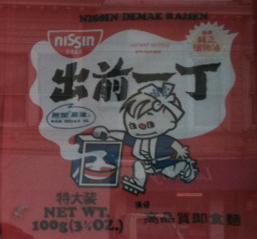Nailed It!
Sometimes the most basic things trip us up the most, particular with language learning. So it was this week when I encountered this word:
一丁
In the kanji universe, the graphics don't get simpler than that!
When I wrote Radical Note 1 on 一, the "one" radical, I came across two instances of this word. The first was straightforward:
Photo Credit:
Eve Kushner
This fragment of a Tokyo subway map says 青山一丁目, telling us that the subway stops in the first block (一丁目, いっちょうめ) of 青山 (あおやま). Never mind that 丁 is etymologically the pictograph of a nail. Because one frequently sees 一丁目, 二丁目 (にちょうめ: Block 2), 三丁目 (さんちょうめ: Block 3), and so on, this usage feels quite normal. And it fits perfectly with the primary meaning of the nail-shaped kanji:
丁 (346: town subsection; miscellaneous counter; just, exactly; fourth (in a sequence))
Things stop being normal (at least for me) when it comes to the 一丁 in the next image, one that I didn't end up including in Radical Note 1:

Photo Credit: Eve Kushner
In a Chinese neighborhood in San Francisco, I found this picture hanging in a shop window. The image contains both Japanese and Traditional Chinese, which makes sense because this instant ramen from Japan has become quite popular in Hong Kong and Mainland China.
Here's the product name:
出前一丁 (でまえいっちょう)
I tried to figure out what it could mean and came up with this:
出前 (でまえ: catering; meal delivery service)
一丁 (いっちょう: one block)
So is the name about delivering to one block ... or block by block? Is it like, if you buy this box of instant noodles, it's as convenient as if someone delivered your meal from one block away?
No, no, and getting warmer. This 一丁 is a counter for food, which comes as a surprise but really shouldn't, given that the second definition of 丁 above is "miscellaneous counter." This is as miscellaneous as it gets! Here's how it works:
ラーメン一丁 means “one order of ramen”
出前一丁 means “one order of food ready for delivery”
When an order of food is ready to be served at a restaurant (typically a casual place), the cook often says this:
一丁あがり (いっちょうあがり: one order up)
At the office and at home, people (usually men) often say the same thing to mean that they've finished one task. It's like "one down."
The Japanese also use 一丁 on another occasion, and again it's not a usage I would have expected. If someone has on only underwear (think of Neil Patrick Harris as the Oscars host last weekend!), the Japanese refer to that this way:
パンツ一丁
Now how did that usage evolve? Could it be that 丁 is pictographic in this context and that 一丁 is a euphemism for one long, thin appendage? If so, that gives new meaning to the idea of nailing someone.
This week's essay is about 且, which has an on-duty "one" radical (一) but is really about the opposite of oneness. With 且 you can link two or more items in sentences, which produces unity, bringing us back to 一! Here's a sneak preview:

Have a great weekend! And stay tuned for tomorrow's newsletter!

Comments